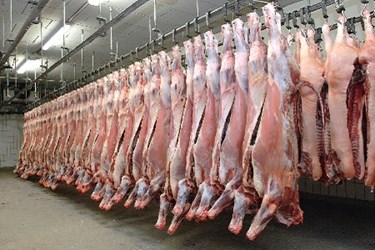Meat Industry Will See New & Improved Salmonella Performance Standards
By Laurel Maloy, contributing writer, Food Online

Poultry Inspection Modernization is only the first step in FSIS’s Salmonella Action Plan
The FDA and the Food Safety and Inspection Service (FSIS) are planning to start the fiscal year with a bang. With changes to the Salmonella Action Plan slated to begin during the next fiscal year, beginning Oct 1, 2014, the agency is acting swiftly.
The acting assistant administrator for the FSIS Office of Policy and Program Development, Rachel Edelstein, recently addressed a meeting of the North American Meat Association (NAMA). Edelstein disclosed that beef samples routinely collected for Shiga toxin-producing Escherichia coli (STEC) testing, have also been subjected to additional analysis for Salmonella. The results, collected since June, will be utilized to establish updated, Salmonella performance standards, especially for ground beef and trim.
Principles Of Hygienic Design Food Production In Sanitary Environments
Edelstein went on to say that new standards are also being developed for Salmonella and Campylobacter in poultry products. Those changes are expected to be effective by the end of this calendar year. She did exclude the pork industry out; Edelstein explained there is evidence that pork also contributes to Salmonella foodborne illnesses. She specifically mentioned the need for improvement in sanitary-dressing issues in regard to hog slaughter. Edelstein has promised an adequate, public comment period before finalization of any new performance standards for the meat processing industry.
Edelstein will also be a speaker at NAMA’s 2014 Beef Safety Conference. The conference will be held on Oct 15 and 16 in Chicago, with the theme of the conference being “Pathogen Control and Regulatory Compliance in Beef Processing.” Its focus will be on ground beef processors, mechanically-tenderized steak processors, and others producing non-contact beef products. Discussion will include ways to improve food-safety systems with speakers addressing both the scientific and regulatory aspects.
Case Study: Bio-Decontamination Of A Food Production Facility
According to NAMA’s website, anyone having anything to do with the meat industry can achieve a benefit from being a member. The beginning of this year, NAMA announced its intent to merge with the American Meat Institute (AMI). The vote by AMI’s general members was unanimous and the NAMA board voted to proceed with the merger on Mar 22. The official effective date of the merger will be Jan 1, 2015. Both NAMA and AMI are nonprofit organizations with similar goals, though methods of achieving those goals vary greatly. It is expected the meat growers, processors, packers, and consumers will derive a huge benefit from this merger. The future of food safety in the meat processing industry is looking good.
